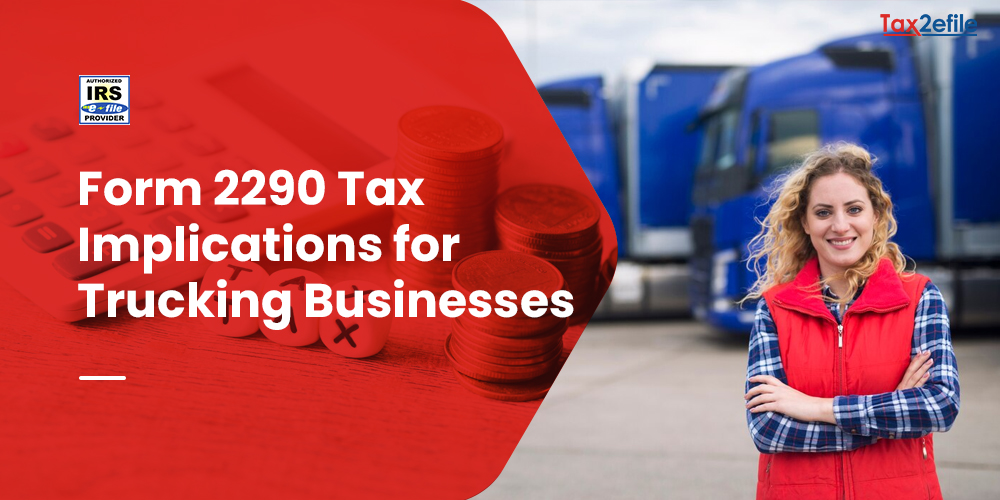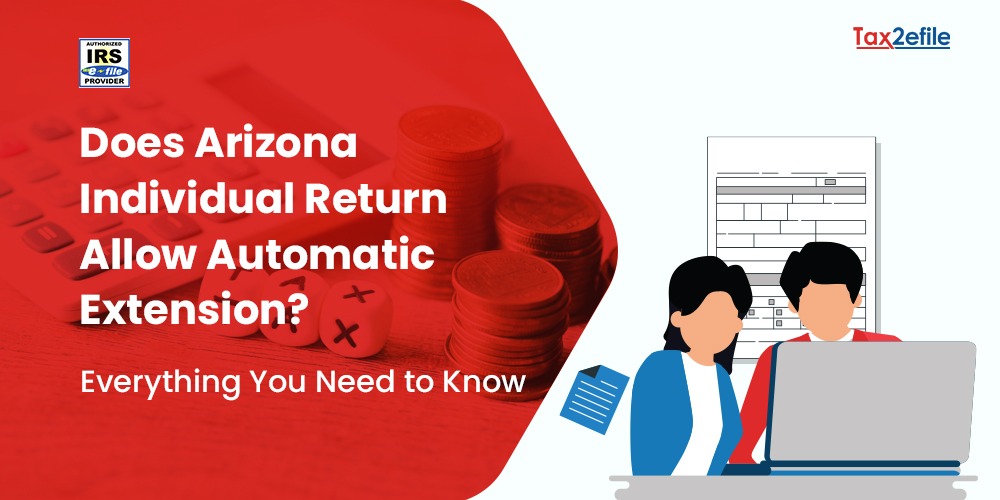- July 2, 2024

Truckers, trucking fleet operators, and large fleet business owners will be busy at this time of the year with their IRS 2290 Tax Forms. This tax Form is used to report and pay the heavy vehicle utility taxes for vehicles that have a taxable gross weight of 55,000 pounds or more and are being operated on public highways. The 2290 tax implications are different for owner-operators and large fleets. In general, any individual, LLC, corporation, or any other type of organization that registers heavy vehicles with a taxable gross weight of 55000 pounds or more should file Form 2290 with the IRS.
Table of Contents
Owner-Operators: Tax Implications for Form 2290
Owner-operators of large trucks have certain responsibilities related to the HVUT taxes, including avoiding penalties and ensuring compliance with IRS requirements. Staying compliant with the tax regulations is crucial for the success of the business and is a must for heavy vehicles that have a gross weight of 55,000 pounds or more and operate on public highways. HVUT is calculated on the basis of the usage and weight of the vehicle. Vehicles that are used solely for agricultural purposes and logging will invite lower rates.
For owner-operators of trucking businesses, it becomes the sole responsibility of the truck owners to file Form 2290. They need to understand the Form completely and ways to file it, to abide by the tax regulations. This also helps them to avoid unwanted stress during the taxing season. They should also be able to accurately calculate the HVUT taxes and completely comprehend it, to meet their tax obligations.
HVUT Tax Filing Requirements
Form 2290, or the HVUT tax Form, is an annual Federal Excise tax on heavy vehicles operating on public highways. Transportation companies, individual truckers, LLCs, corporations, partnerships, owners, and operators are expected to meet this tax implication on an annual basis. In order to promptly file the returns with the IRS, the following requirements are to be met.
- It is important to have a valid EIN to file this tax return. It is not possible to file the returns with the help of the social security number.
- If the taxes are not paid on time, penalties and interest will accrue. Other adverse effects could also occur. For example, the truck owner may not be able to register their vehicle if they do not have proof of tax payment.
- It is important to check all the details reported on the tax form to prevent the Form from being amended.
- The best way to file the tax returns is to E-file the returns, especially if the operator has more than 25 vehicles in their fleet. E-filing the returns will also avoid errors and quick submission of the returns to the IRS.
- If the operator believes that they will operate a taxable vehicle for 5000 miles or less, then they can suspend the tax. Though they still have to file the returns, they need not pay the taxes. This limit is 7500 miles for agricultural vehicles.
Tax Calculation for IRS Form 2290
The IRS will calculate the HVUT taxes on the truck on the basis of the gross weight of the vehicle. Therefore, the bigger the truck, the greater would be the taxes on the vehicle. The heavy vehicle use tax, or HVUT, is a fee assessed annually on vehicles that are operating on public highways at registered gross weights that are equal to or exceeding 55,000 pounds. The total taxable weight of the vehicle is determined by adding,
- The actual unloaded weight of the vehicle that is completely equipped for service.
- The unloaded weight of the trailer or any semitrailer that is used along with the vehicle.
- Taxes are also calculated on the basis of the weight of the maximum load that is carried on the vehicle or on its trailers or semitrailers customarily.
For example, if the gross weight of the vehicle is 55000 pounds, then the HVUT taxes would be $100, along with $22 for every 1000 pounds over 55,000 pounds. For vehicles that are over 75000 pounds in weight, the maximum HVUT is $550 per year.
Deductibility and Record-Keeping
The logging vehicles can be eligible for reduced tax implications under the following conditions.
- If the vehicle is used exclusively for the transportation of the products that are specifically being harvested from the forested site.
- If the vehicle is used specifically for transporting the products from the forested site to and for the locations on a forested site, then it can have less taxes implied. This transport route also includes public highways between the forested site locations.
- If the vehicle fleet records 5000 miles of transit, it need not pay any taxes, though it must record the returns. This limit is 7500 miles for agriculture vehicles.
- Vehicles not considered to be highway motor vehicles, such as trucks used for non-transportation functions, mobile machinery, vehicles designed specifically for off-highway transportation, trailers, and semi-trailers not used for transportation, etc.
Vehicles not considered to be highway motor vehicles, such as trucks used for non-transportation functions, mobile machinery, vehicles designed specifically for off-highway transportation, trailers, and semi-trailers not used for transportation, etc.
- Vehicles belonging to the Federal government
- Vehicles within the District of Columbia
- State and local government vehicles
- Trucks belonging to The American Red Cross
- Vehicles belonging to the nonprofit volunteer fire departments, rescue squads, and ambulance associations.
- Trucks are used by the mass transportation authorities.
Taxpayers should retain copies of the file Form 2290 returns and its schedules. They should also retain the records of the vehicles if the vehicle is registered in the name of the tax period for a brief reporting period. The IRS recommends maintaining these records for about three years after the date the tax is due or paid, whichever is later.
Large Trucking Companies: Fleet Management and Compliance
Fleet management in large trucking companies involves many critical processes, such as overseeing and coordinating the vehicles of the company to ensure optimal cost savings, efficient operations, and also timely deliveries. Effective fleet management and compliance encompasses many key components such as fuel management, acquisition of vehicles, scheduling of drivers, staying compliant with tax regulations, etc.

Trucking companies, regardless of their size, grapple with a myriad of tax compliance challenges, including fuel taxes, highway use taxes, heavy vehicle use taxes, International Fuel Tax Agreement filings, etc. The highway use taxes vary from one state to another. Apart from paying the federal highway use taxes, the large trucking companies should also comply with the highway use tax requirements in some states. For example,
- Kentucky requires its fleet operators to pay a Highway Use License for vehicles that weigh more than 60,000 pounds.
- New York has a highway use tax on vehicles that weigh more than 18,000 pounds. The tax is computed by multiplying the number of miles traveled on the state public highways.
- Oregon requires motor carriers to operate trucks with a gross weight of 26,000 pounds in commercial operations on public roads.
HVUT Taxes Outsourcing and Professional Services
Any trucker, be it an owner-operator or an owner of a large fleet service, should file IRS HVUT Form 2290 if their trucks weigh more than 55,000 pounds. They have to calculate the total HVUT taxes for the tax year and pay the same to the IRS. The due date to file the tax form with the IRS will be the last day of the month, following the first use month of the vehicle on the road. For example, for the vehicles that were put on the road for the first time in the month of May 2024, the deadline to file the tax Form 2290 is June 2024.
Before filing the tax returns, it is important to make sure that the taxpayer has the following information at hand. The information includes,
- Name and address of the business
- Employer identification number
- Vehicle identification number
- Taxable gross weight of the vehicle
- Details on the first use month of the vehicle
The IRS suggests fleet owners E-file Form 2290 for quick processing and to get Schedule 1 back in the mail within minutes. Truckers with more than 25 trucks must also e-file their tax returns. Tax2efile is an IRS-authorized e-filing service provider that can competently help truckers complete their tax returns at an affordable cost.
Tax Planning and Optimization Strategies
Tax planning is the assessment and arrangement of the financial situation of a trucker to reduce tax liabilities in an efficient and legal manner. One secret to maximizing tax savings is to file Form 2290 early. This offers enough time to review the Form for errors and corrections. While filing the form, it is important to enter accurate vehicle information and claim suspended vehicles.
Truckers can also prorate the taxes on their vehicles, which means they can pay the taxes only for the portion of the tax year during which the vehicle was in use. They can also use the direct debit option while filing so that the taxes get deducted from the bank account, thus ensuring timely payments and avoiding penalties.
Maximizing tax savings with IRS Form 2290 demands a proactive approach and keen attention to detail. By following the above-mentioned information, tips, and insider secrets, truckers can easily optimize their tax savings and manage their tax implications efficiently.


